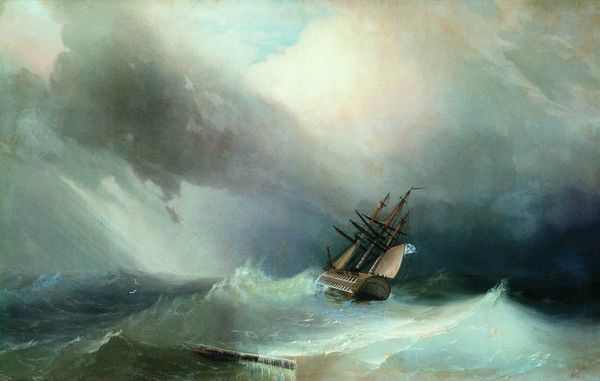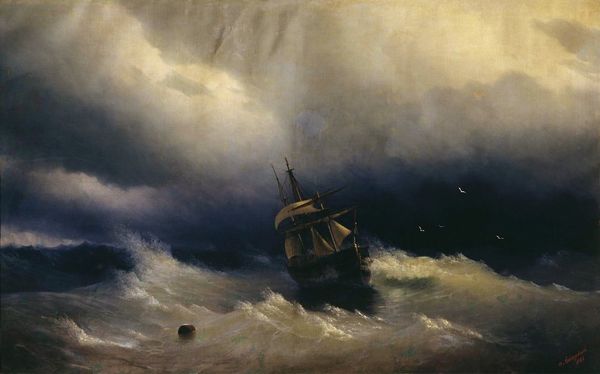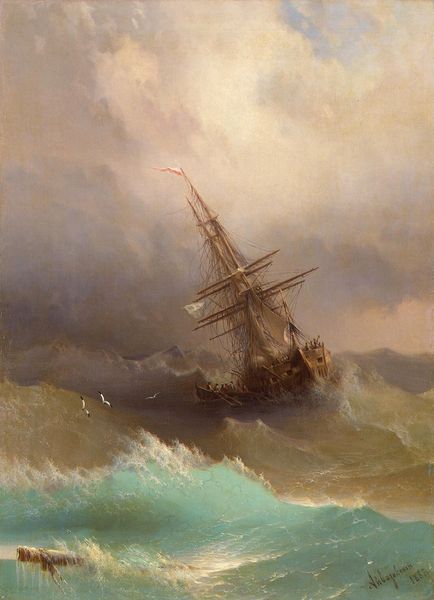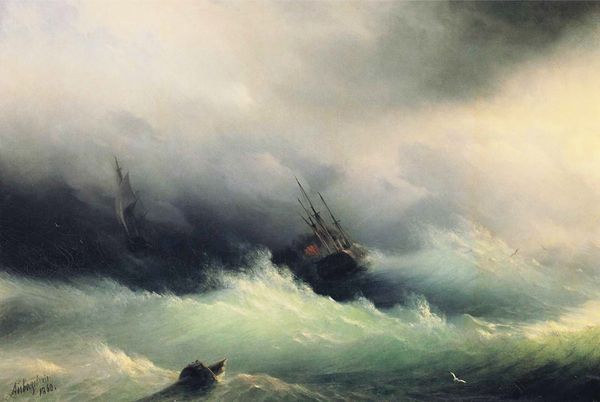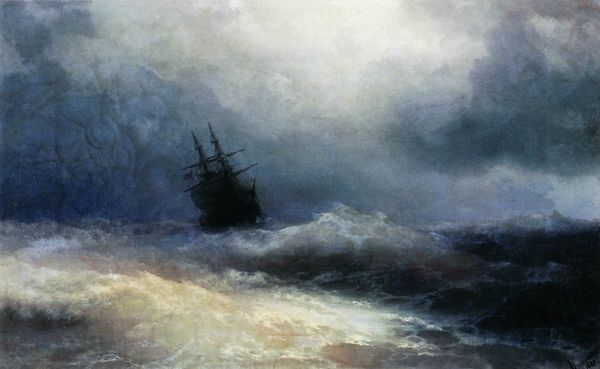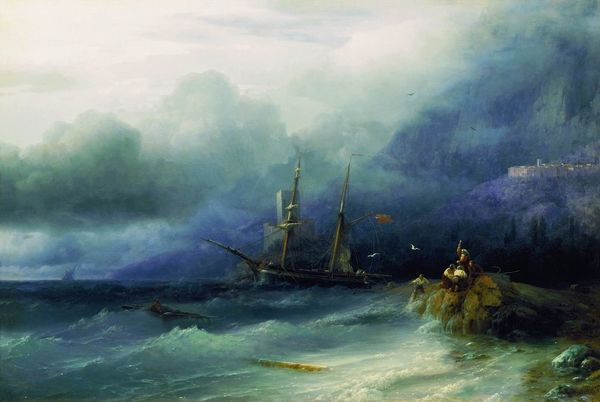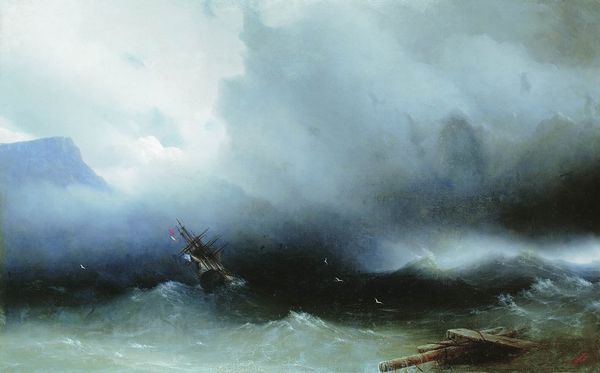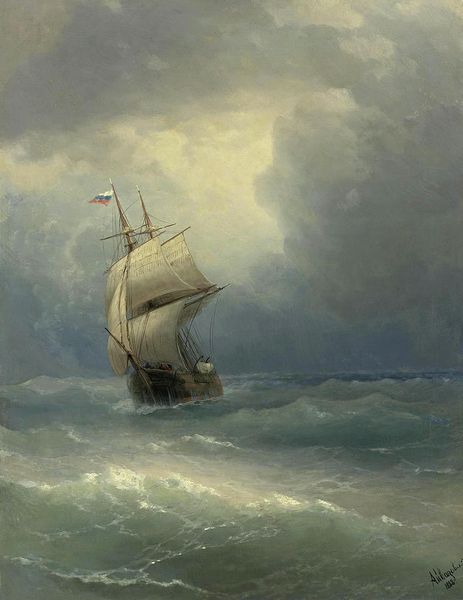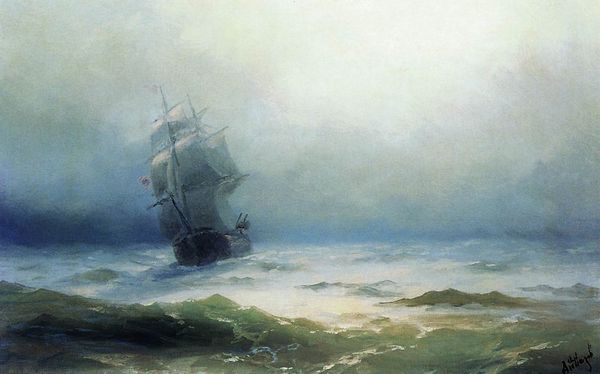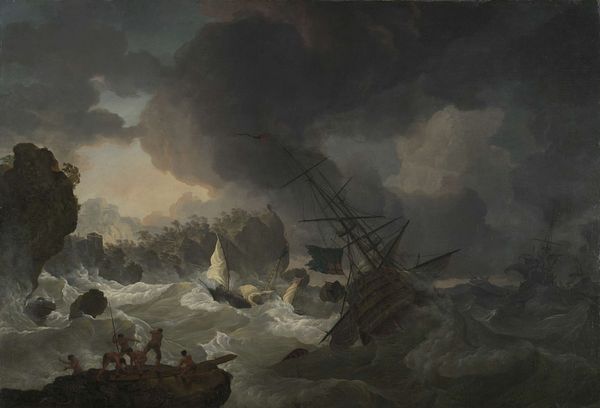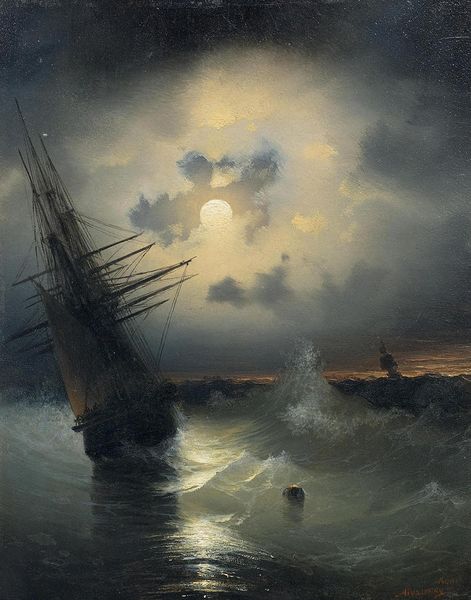
Copyright: Public domain
Editor: This is Ivan Aivazovsky’s "Ships in a Stormy Sea," painted in 1866 using oil. The immediate feeling is definitely one of chaos and drama. What strikes you when you look at it? Curator: What seizes my attention is how Aivazovsky orchestrates visual weight. The dense, turbulent cloudscape forms a darkly active mass balanced, not defeated, by the illuminated yet equally animated sea. How do you interpret that compositional push and pull? Editor: I guess I see how the light tries to break through, but it’s almost overwhelmed by the dark clouds, giving it this sense of impending doom, yet also a certain resilience in those who navigate the water. It's like a dance between light and shadow, chaos and...not really order, but maybe resistance? Curator: Precisely. Consider, then, the texture achieved through brushwork. Observe the thickness of the paint as it defines the cresting waves versus the thinned, almost transparent applications suggesting the ethereal quality of light piercing through the clouds. Where does this textural contrast lead our understanding? Editor: I suppose it’s highlighting that duality again – the tangible struggle versus the…hope? The roughness and smoothness really do add to that feeling of contrast. The paint itself becomes another way the story is told. Curator: Precisely. It is not simply a representation but a constructed reality achieved through the artist’s deliberate manipulation of the medium. A powerful demonstration of form dictating content. Editor: That’s fascinating, I’ll never look at a stormy sea the same way again. Curator: Indeed, and this concentrated visual vocabulary offers its own language that we’ve just begun to decode.
Comments
No comments
Be the first to comment and join the conversation on the ultimate creative platform.
